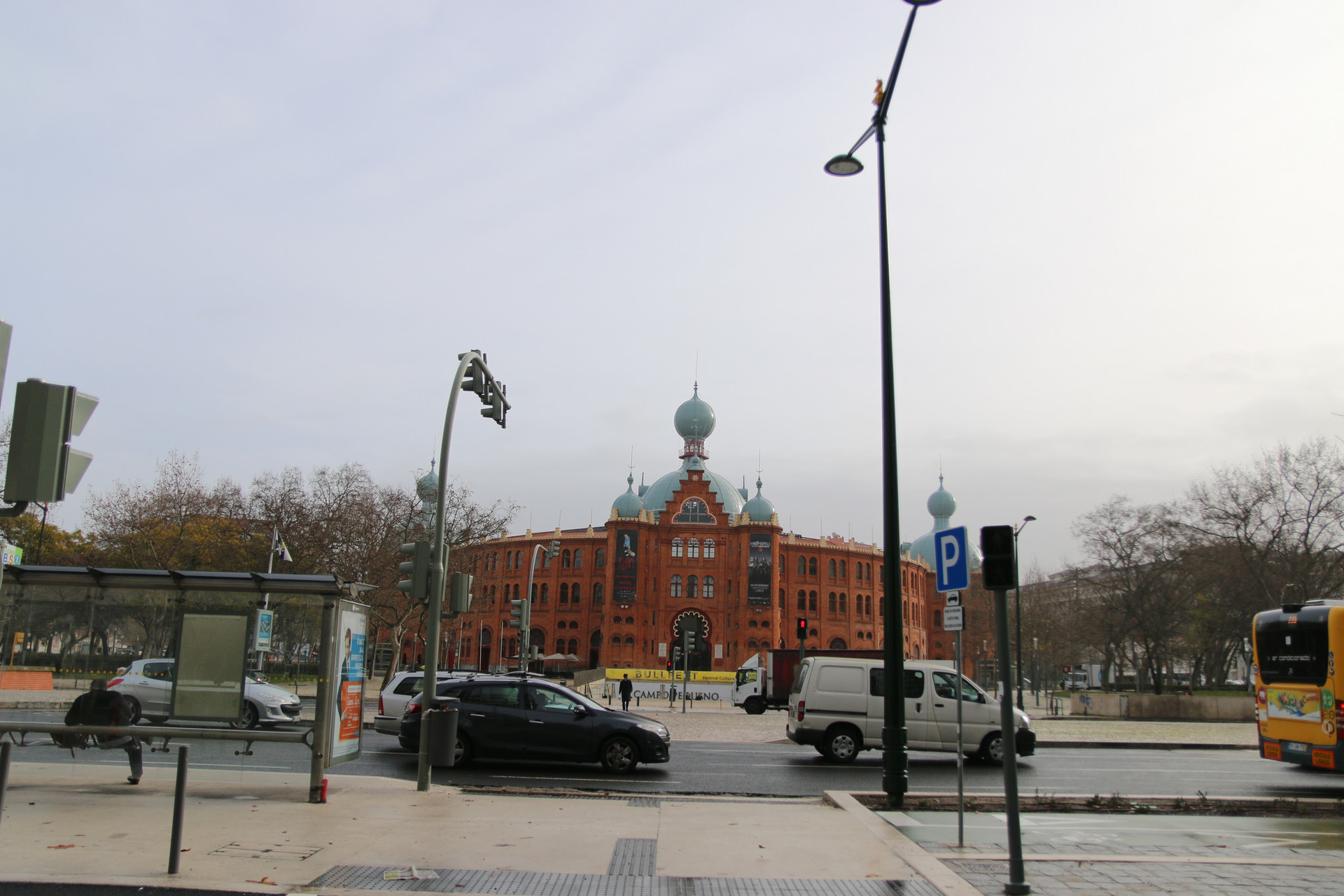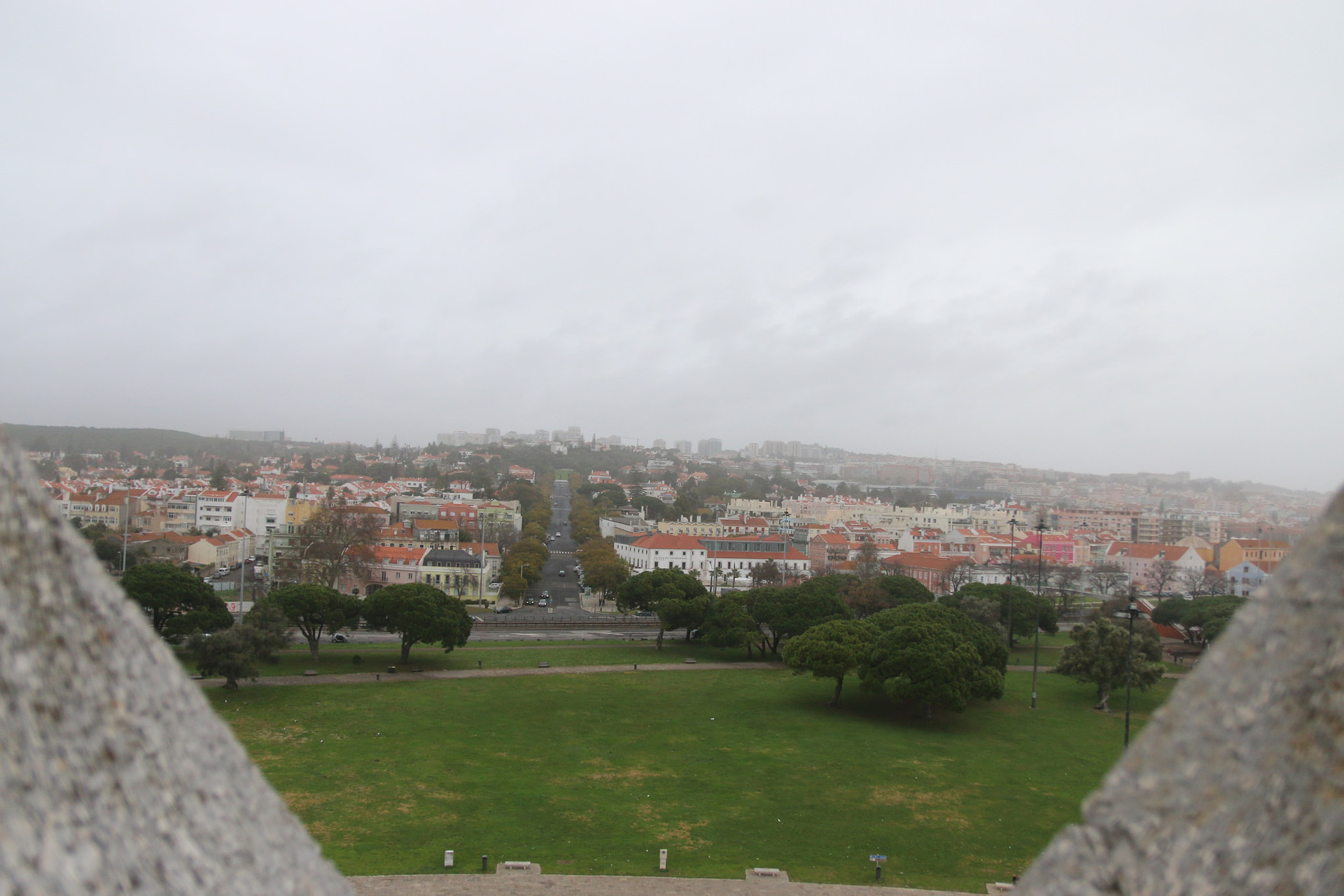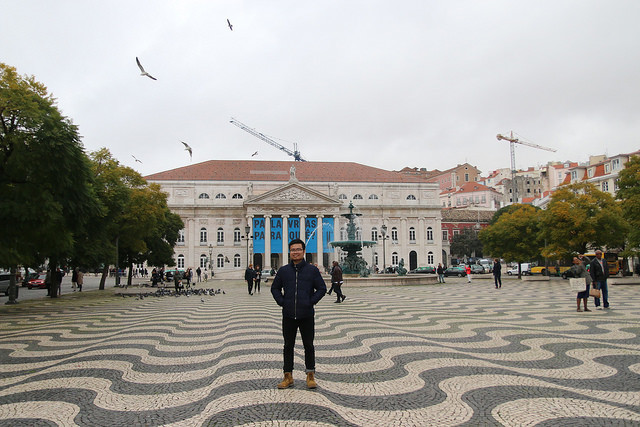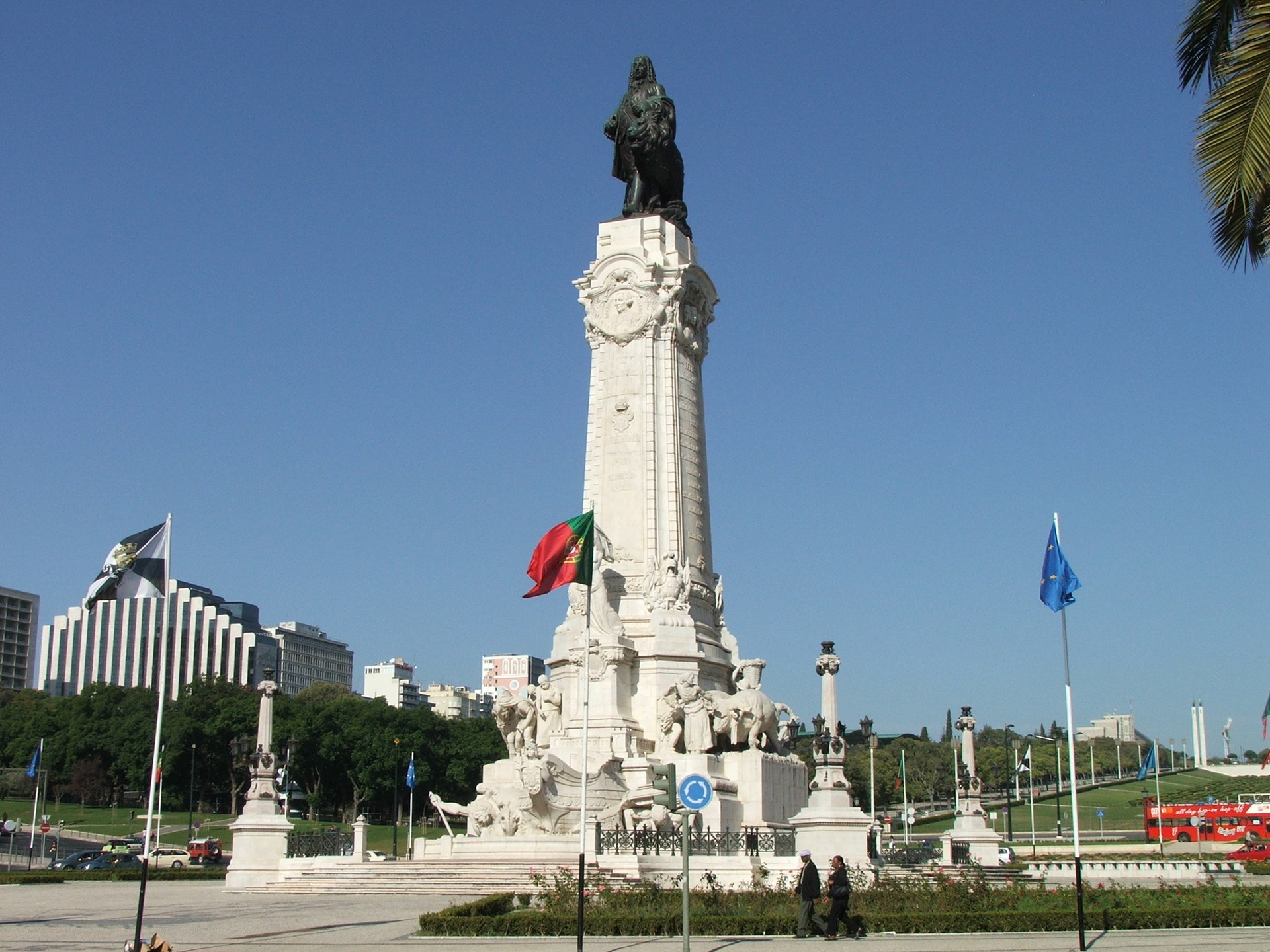Portugal - Lisboa 1
From Porto to Lisbon the roads were spacious so around 3 pm we arrived near Lisbon, the capital of Portugal. What is the history of Portugal?
I also got to know a little bit and luckily the car has free wifi. I will briefly describe the following.
Portugal
Located in the southwestern part of the European continent, the border with Spain is the only one in the east, while the west is the Atlantic Ocean. Although there was a time rich with many colonies scattered from the United States, Africa to Asia as Brazil, Mozambique, Angola, Macao ... today Portugal is a poor country in Western Europe.
Like Spain, I found Portugal also under Roman control, and the Moors were Muslims from North Africa. It was not until the 12th century that Portugal became independent and established the first nation in Europe.

My first glimspe of Lisboa!!!!
The most glorious period of Portuguese history is around the 15th and 16th centuries. This period is called the Epoch of Discovery. With bravery and pioneering spirit, Portuguese navigators turn their way to India, Brazil, and even around the world. Their names are widely known: Vasco de Gama, Magelland, as well as Henry the Navigator. Jewelry from the pouring out to Lisbon as the waterfall makes this country rich and prosperous.
But after the 1775 earthquake, Portugal collapsed rapidly. It was once occupied by neighboring countries such as Spain, France (Napoleon). At the beginning of this century, Portugal was under the rule of a dictator, Salazar, for 44 years (1932-1974). At that time, there was no opposition party, workers were not on strike, the press was censored. Although the domestic economy has grown a bit, but because the colonies demanded independence, the budget was subjected to a great military burden, which inevitably left the independence of these countries. At that time, Portugal had to bear another problem that was the refugees of the Portuguese from the African countries. Nearly a million repatriates have left much of the economic and social turmoil there.
Until recently, the Portuguese economy gradually recovered with the European Union joining the EU in 1986 with Spain. A successful international fair in Lisbon in 1998 showed that the Portuguese economy was stable and on the rise.
We will visit Portugal from north to south Porto port city back to the capital Lisbon.
Lisbon:

We arrived in Lisbon from the south. This city gave me a good impression when the car ran on the bridge hanging April 25 looking down the city. Other visitors also feel the same about the beauty of Lisbon from above. They look to the left, they look to the right, Lisbon has occupied our sympathy since the new arrival.
Lisbon, also known as the city of the seven hills, is located at the mouth of the Tagus River. Formerly known as Olisipo, Lissabona and recognized as the capital of Portugal since 1260. Since then, Lisbon has grown strongly after Vasco de Gama found its way to India (Calcutta) ) And gold was discovered in Brazil. Merchants have come from all over. They trade in gold and spices, silk and gems ... Buildings, buildings are built in accordance with the prosperity of the city. But on the morning of November 1, 1775, while everyone was attending the Feast of Saints, a devastating earthquake ravaged half of Lisbon into rubble. Tsunami washed away ship to the sea. Fire burned the city more than three days off. More than 50,000 people die within Lisbon. Thousands died in the vicinity.
Following the earthquake, under the direction of Prime Minister Marque de Pombal, Lisbon rebuilded rapidly. The city was restored and prettier, although its political role in Europe has declined significantly.
n the early 20th century, Lisbon witnessed the assassination of King Dom Carlos and his eldest son, as well as bloodless coups in 1926 and 1974 or the return of nearly 1 million Portuguese from Africa. Returning home scarce ... But the last century show Lisbon has revived with Portugal joining the EU. Lisbon was awarded the European Culture City in 1994 and hosted the International Fair in 1998. Lisbon today may not be as glorious as the era of Vasco de Gama, but it is also a lovely city of Europe. There are crowds, pavement cafes, souvenir shops, embroideries, leather goods ... and many visitors like us to make Lisbon a The atmosphere is cheerful, lively.
The car was in the city center. Roads here are also spacious, but many vehicles are slightly stuck. Many Lisbon cars with Mercedess, BMW ... show that Lisbonians are well off. In particular, the pavement in Lisbon is paved with beautiful stone. This way of paving is a characteristic of the Portuguese. Later in Macao I saw them doing the same. Slice so beautiful but perishable. When it comes to building and repairing, it will take a lot of work.
We also saw a high stone arch bridge crossing the road. We thought it was a bridge for the car but it was not. In fact, it was a bridge to drinking water for the city. The bridges have long been still good today. The whole system is 25 km long.
Arrive at the hotel at 4pm. We went out for free tonight. After checking in, I walked down the street in front of the hotel looking for an internet cafe to email but did not have. While calling a public phone in the US is easy and cheap. After contacting my daughter and knowing that everything was still at peace, we found our way to the subway station to get into the city center. The first place is Rosio Square:
Rossio Square: It can be said that this is the heart of Lisbon. The official name is Dom Pedro IV Square with its statue built in the center of the square. Rossio Square is Located in the north of Baxia in the heart of Lisbon, formerly a market, after 1775 was built into a square. North of the square is the National Theater. In the east there is a smaller square called Figuera. The north is Church of St. Domingos. The train station here is a very beautiful architecture. Today, around the square is a fun place with flower shops, fountains, outdoor cafes...
Rossio Square

(Behind is the City Theater)
On the sidewalks around the area, migrants from Africa sell "runes" like pirated DVDs, souvenirs, postcards ... In Lisbon, there are also smugglers, Brazilians, or Eastern Europeans. Like Lulea, Yugoslavia. Because it is hard to find a job, these refugee girls are the most ancient profession, without the capital.
From Rosio Square, I can see one of Lisbon's tourist attractions: St. George on a high hill. The castle was built in Roman times; damaged and renovated during the Moors, Visigoths ... The present castle is a fortress with 10 towers built in the 12th century and the palace of the Royal Portuguese in the 14-16th century. Once upon a time there was a ... prison. Visitors can climb walls to view panoramic views of Lisbon and the Tagus River from above, reminiscent of historic ups and downs.
It was difficult to climb the hill so we just walked across the northern part of Rosio Square to roam the Liberidale Boulevard. This Liberidale Boulevard starts from Rossie Square to Marqué Pompal Square. It is the most spacious boulevard in Lisbon with six lanes in the interior, two dividing trees and two pedestrian crossings and the two sides of the boulevard of large stores, banks, large factories. The buildings on this road are beautiful.
I went up to Marqué Pompal Square tired legs, we immediately down the subway to go back. This time we went to see another square is the commercial square:

Business Square (Placa do Comercio): Situated on the banks of the Tagus River, where everyone arrives in Lisbon. You can also see marble-ladder steps from the riverbank onto the square. The square was built under the direction of Marque de Pombal after the earthquake of 1775. The three sides of the square are neo-classical buildings used for government offices or restaurants. The square is also known as Royal Square because of the former Royal Palace, which is also known as the Black Horse Square because of the statue of King Jose I (King of Portugal at 1775 earthquake) horse ... This statue is made by sculptor Joaquin Machado de Castro from the 18th century. In the north, the Arc de Triomphe leads onto Augusta Boulevard, a pedestrian avenue that goes from the Trade Square to the center of Baixa. On the Arc de Triomphe there are statues of people with merits with Lisbon such as Vasco de Gama, Marqué de Pombal. Trade Square is the scene of the assassination of King Carlos I and his eldest son in 1908.
After visiting Placa do Comerico , it is also dark. We returned to the tram station to get to the hotel, ending the first day of exploring Lisbon.
Photo gallery
Want to have your own Erasmus blog?
If you are experiencing living abroad, you're an avid traveller or want to promote the city where you live... create your own blog and share your adventures!
I want to create my Erasmus blog! →



















Comments (0 comments)